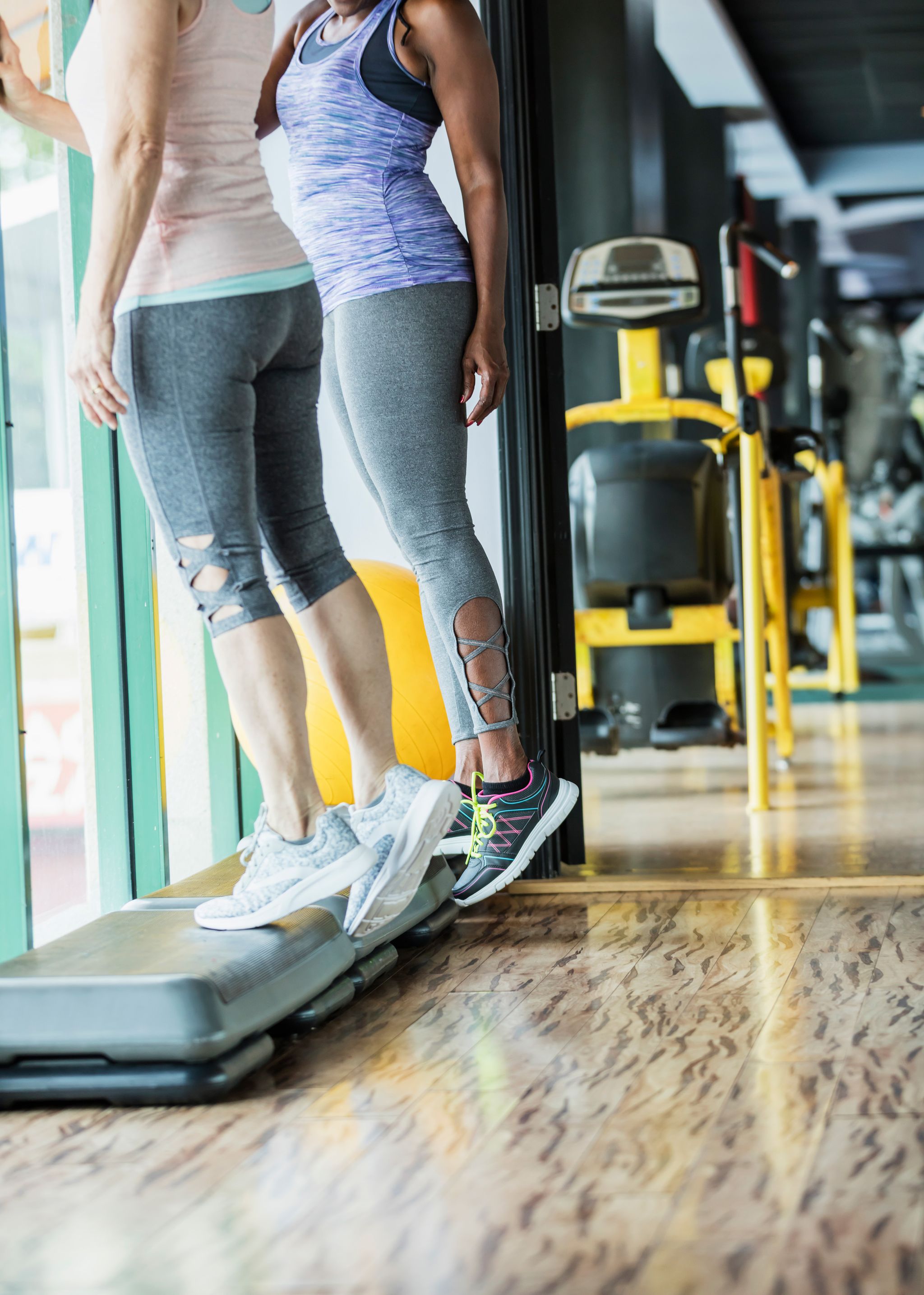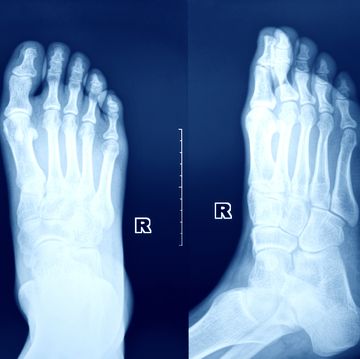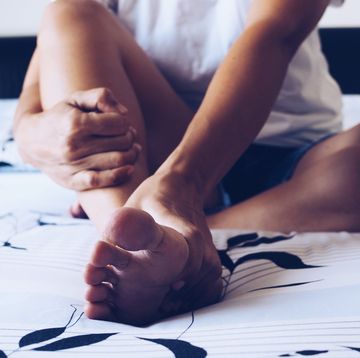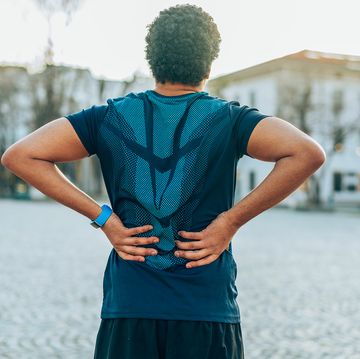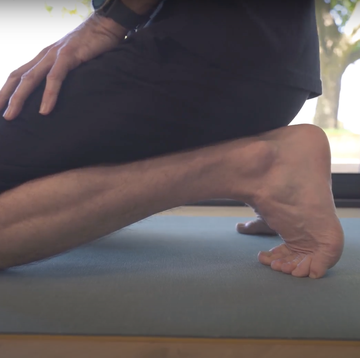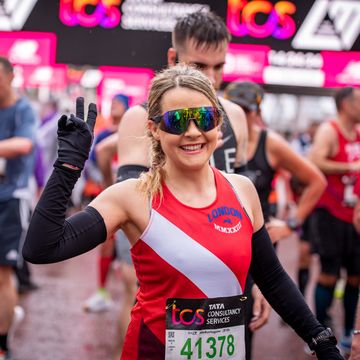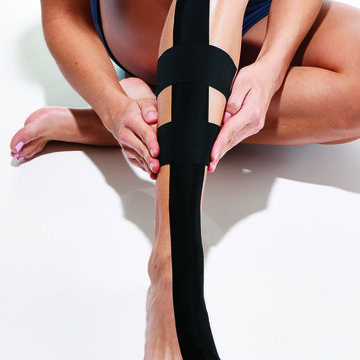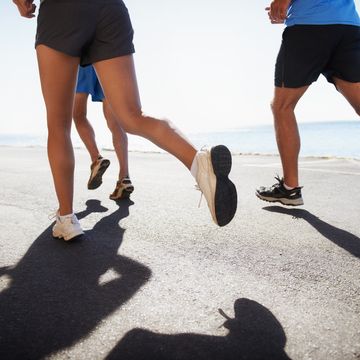Achilles tendon injuries are one of the most common issues we see in the clinic. The achilles is exposed to huge loads when running – roughly 5.2x our bodyweight. But tendons are incredibly sensitive to load, and especially sudden changes in load, whether that be a rapid increase in running volume or certain biomechanics that repeatedly overload one specific area.
What makes our lives difficult is that tendons need to be exposed to load in order to strengthen them, and for them to adapt and become more robust, however too much, too quickly, and we risk overload. Managing this exposure to load can be difficult, and there is no one size fits all, but if you get the balance right, treatment outcomes can be really positive.
What does the achilles tendon do?
The achilles is one of the largest and strongest tendons in the body. And it has to work hard when you're running. It has to take 6-8 x bodyweight every time your foot strikes the ground. Like other tendons, it's able to adapt. If you build up your running gradually, it's able to get tougher and stronger and therefore able to cope with the load you're putting through it. When you experience pain in the tendon, it's usually a result of doing too much too soon.
What is the difference between achilles tendinopathy and achilles tendonitis?
The achilles tendon attaches the calf muscles (made up of the soleus and gastrocnemius muscles) to the heel bone, transmitting forces through the foot and ankle at push off, as well as controlling motion of the ankle and knee as we move through the phases of our gait cycle.
A true achilles tendinopathy is a disorder of this tendon, that research has shown is not inflammatory in nature, as previously thought. It used to be termed achilles tendonitis, but since the 'itis' usually refers to inflammation, achilles tendinopathy is now the favoured term among medical professionals.
Achilles tendinopathy is a failed response of the tendon to a sudden increase in load with a resulting increase in protein, water, blood vessels and nerves within the tendon. These tend to occur over a period of days or weeks, rather than occurring suddenly, and tend to be driven by training errors or biomechanical issues that may have been present some weeks prior to the onset of pain.
What causes achilles tendinopathy?
Training errors
- Rapid increase your running mileage
- Sudden increase in running intensity
- Sudden incorporation of new training types (eg, hill or track running)
- Sudden change in footwear – e.g, cushioned shoes to track spikes when transitioning from road to track running
Biomechanics
Biomechanics is all to do with how we move. When assessing someone’s biomechanics, we are looking at how the various structures of the body are moving in relation to one another and how are they interacting with the ground.
Certain biomechanics have been shown to increase our likelihood of developing certain lower limb type injuries. These include:
- Poor pelvic control – excessive hip drop on landing
- Increased knee internal rotation – knee ‘twisting in’ pattern when transitioning through stance phase
- Poor foot and ankle control – poorly controlled foot and ankle motion, especially at mid-late stance phase
Achilles tendinopathy symptoms
Tendons are in a constant state of damage, repair, and regeneration – it’s how our tendons get stronger. If the amount of tissue damage and breakdown is greater than the speed of regeneration, you run the risk of overloading the structure and developing a tendinopathy. This can be seen on a continuum of three stages:
1. Reactive tendon - acute
- Onset of pain is rarely sudden but more a soreness that builds in severity over several days. Soreness and stiffness in the mornings is common, especially on walking upstairs
- Thickening or ‘swelling’ within the middle 2-6cm of the tendon and lumps (aka nodules) are often felt here. We think this is a short-term adaptation to protect the tendon
2. Tendon dysrepair
- Symptoms here will be similar to those in the ‘reactive’ stage
- If we continue to ignore the early signs of tendon overload and continue to run without modifying our training, the actual structure of the tendon will begin to change, bringing more blood vessels and nerves into the area.
3. Degenerative tendon - chronic
- Tends to occur in older runners or those who have continually ignored symptoms and continued to run through discomfort. This is often a runner that complains, not of pain necessarily, but of a long history of stiffness and tightness in the morning, as well as during the first few minutes of runs, which tends to ease
- More permanent changes in the structure of the tendon, with areas of thickening as well as nodules that can be felt
- Degenerative tendons require more than rest and a reduction in running volume: a combination of load management, tendon loading exercises (see below) and other modalities such as shockwave therapy (ESWT), which has been shown to help kickstart a more acute healing and repair process in chronic cases
- May also present with an ‘acute-on-chronic’ issue whereby a more acute reactive tendinopathy has occurred in an area of healthy tendon, alongside an existing area of chronic degeneration
How to treat an achilles tendinopathy
Advice and exercises will vary on several things:
- Location of your achilles pain
- Whether it's an acute or more chronic issue
- Current training loads
Reduce the load
Tendon management is an on-going process that must be continuously monitored, especially when returning from injury. I advise my runners to keep a diary to monitor their symptoms and the behaviour of the tendon. With tendons, and especially the achilles, you may often feel fine during your run, however the next morning, you find yourself hobbling about. If it takes a few flights of stairs, or greater than a mile or so of running to ease these symptoms, you are likely asking too much of it. Ease things back until symptoms are more manageable. That might mean an initial week of rest or, if symptoms are more manageable, reducing the intensity or volume of running.
Do NOT stretch
Tendons that are already overloaded do not like tensile forces, so do not try to stretch the achilles.
Strengthening
To increase the tolerance of the tendon to load we need to gradually expose it to increasing amounts of load. This can be done in the form of a variety of heel raise type exercises, depending on the severity of your achilles tendinopathy. The following two exercises are suitable for mid-portion achilles injuries in the reactive tendon stage.
Isometric heel raise (perform with knee bent and with knee straight)
- From the floor or over the edge of a step, raise up onto tip toes so that you are roughly 50% of the way up.
- Transfer your weight onto the affected leg and hold this position.
- Hold for 10-15 seconds.
- Repeat 5-6 times, 1-2 times daily.
- As symptoms settle, work towards holding for 30-45 seconds and repeat this 3-4 times, 1-2 times daily.
- Then, progress from bodyweight to adding in some external weight. Start with 5kg and increase weight from there – 15-20kg is a good aim.
Eccentric heel drop (perform with knee bent and knee straight)
Double leg raise to single leg lower
- From the floor or off the edge of a step (harder), raise up onto tip toes. Transfer all your weight onto the affected leg and then slowly (3-5 seconds) lower your heel towards the ground.
- Perform 12-15 repetitions with just bodyweight x3 – and repeat once a day.
- As symptoms settle, increase the amount of resistance while reducing the number of repetitions, for example: 10 repetitions with 10kg x3
As with the running you must monitor your symptoms once you initiate these exercises. You want there to be no increase in symptoms immediately after or within the 24 hours following.
My prescription for repetitions, sets, weight and frequency would be individual based, depending on current volume of running and the extent of the achilles tendinopathy.
Once you're confident in your ability performing these exercises, and are not experiencing symptoms afterwards, you can progress to plyometric strengthening exercises.
Plyometric exercises
Plyometric training targets what we call the ‘stretch-shortening-cycle’ within our tendons. The achilles tendon is like a thick elastic band that has the capacity to absorb and store energy on impact and then rapidly release it at push off to provide the propulsion needed to drive ourselves forwards when running. The more efficient we are at using this system, the ‘snappier’ and more ‘springy’ you will be when running, meaning you will spend less time in contact with the ground and overall improve your running economy.
The following running drills can be a good introduction to plyometric training:
Active plant walk
- Begin by raising up onto the balls of both feet.
- Pull the toes of one foot off the floor and up towards your shin, as the opposite foot stays planted into the ground, on tip toes.
- Then switch – actively planting your foot into the ground as you pull the toes of the other foot up towards your shin.
- Perform on the spot initially and progress to performing the movement as you walk forwards. As you gain confidence, I would also look to then increase the speed of the movement as more of a gentle skip.
- Repeat this for 15 reps, for 2-3 sets.
- Perform twice weekly before you runs.
A-Skip
- Perform a skipping motion whereby you perform a double leg hop immediately followed by a high knee movement. Performing the running drill on your forefoot is the – aiming to be quite snappy and bouncy off the ground.
- As your knees raises up into the high knee position pull the toes tight to your shin.
- Think 1-2-1-2-1-2 rhythm as you perform the A-Skip, where two feet are in contact with the ground, followed by one foot.
- Perform for 10-15m, for 3 sets.
- Perform twice weekly or as part of your pre-run routine.
Should you run with achilles tendinopathy?
Try these three simple tests to determine if you should continue to run with your sore achilles:
- Can you walk pain free?
No – rest
Yes – move onto the next test - Can you do 20x heel raises pain free?
No – rest
Yes – move onto the next test - Can you perform 10-15 single-leg hops?
No – rest
Yes – try a short run, 5 minutes initially or 5 x1min on/1min off. Then, monitor your symptoms over the next 24 hours and progress from there
Other types of achilles tendon injury
We must also be aware of some other conditions that can exist around the achilles tendon. The insertion point of the achilles tendon into the heel can cause issues – this is termed insertional achilles tendinopathy. Pain here will present at the attachment of the tendon into the heel bone, rather than the mid-portion of the tendon.
In this area you can also develop inflammation of what’s known as the retrocalcaneal bursa – a small sac of fluid that sits between the achilles tendon and the heel bone to reduce friction. Achilles tenosynovitis is an inflammatory conditioning affecting the sheath that surrounds the achilles tendon. Although similar in nature to achilles tendinopathy, these may worsen with activity – even biking – rather than easing.
If you have a particularly bony heel, especially on the outer part, you may have a Haglund’s deformity. This can be genetic or a response to loading. Due to the location of the Haglund once irritated, it can be difficult to settle as, with each step, the extra area of bone nestles into the back of the achilles tendon, further causing pain.
If you suspect you are suffering with any of these issues, seek advice from a chartered physiotherapist and do not continue running or pushing on with exercises through pain and discomfort. Treatment, advice and exercise prescription for these issues will vary from that of achilles tendinopathy, so it's worth seeking expert advice before trying to manage things yourself.
..
